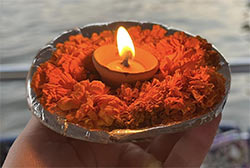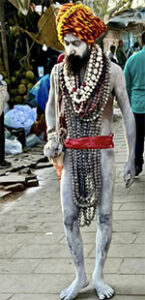India – A Most Magical and Fantastical Land
With its sumptuous mix of traditions, spiritual beliefs, festivals, architecture and landscapes, India is a destination that unlike any other. Travelling to India reveals a country that is both mesmerizing, exotic, exciting, and mystical. In February of 2023 the Women's Travel Club embarked on a journey to explore some of the best that the Golden Triangle has to offer and we were definitely not disappointed!
Delhi
Our tour started in Delhi with its fascinating collage of old and new. After breakfast we enjoyed a tour to Old Delhi, visiting Jama Masjid- one of the largest mosques in Asia. It offers an excellent view of the old city and the Red Fort. The best way to experience Old Delhi was to take a bicycle rickshaw through the narrow lanes and bazaars of the old city. From our rickshaw we take it all in; the havelis (mansions) which still retain their traditional appearance, Jain temples, small businesses, kinari bazaar (one of the most popular bazaars in Delhi) and parathe wali gali (the street famous for fried bread).


After lunch we visited Humayun's Tomb, built by the widow of the second Mughal Emperor, Humayun and a precursor of the Taj Mahal. Also drive past the imposing India Gate- a war memorial, the Parliament Building and the President House, before arriving at Qutub Minar, the tallest stone tower in India.
Then it was time for some fun! We donned beautiful sarees and made way for the dance studio to learn some Bollywood moves. I think we did a great job and if nothing else we had a fabulous time. Lots of laughter and great memories, the perfect way to forge some wonderful friendships.
Varanasi
Varanasi is the India of your imagination. This is one of the world's oldest continually inhabited cities, and one of the holiest in Hinduism. Situated in the fertile Ganga valley and on the banks of the Ganges, Varanasi is a place of pilgrimage for Hindus, who come to bathe in the holy river. We were very fortunate to witness the Aarti Ceremony (Hindu ritual /prayer of river Ganges at Sunset) on a Ghat close to our hotel. The ceremony is extremely moving and really something that is almost indescribable, with the jingling of bells, floating diyas and haunting mantras, it is unforgettable.


We are up early this morning for a Boat Ride on River Ganges. The western banks of Ganges have a string of 84 Ghats (the chain of stone steps) and interestingly each of them has a story to relate. Most of these Ghats built with pavilions, palaces and terraces are mainly used as Dharamsalas (a home for the pilgrims during their visit to the holy city). The sunrise on the Ganges popularly known as Subeh Banaras is a soul-lifting experience.
At dawn-the Ghats are abuzz with activity of the devotees performing their ablutions in the river or offering prayers to the rising sun and performing other religious rituals. At Manikarnika Ghat- Cremation is a continuous process (photography prohibited). After the boat cruise on the Ganges walk through the narrow lanes visiting the Vishwanath temple popularly known as the Golden Temple (entry restricted to Hindus only) and a few other Temples, that this holy city is known for. Along our walk we saw a naga sadhu, a monk from Nepal. Human ash covers their body for warmth and protection.
Agra
Our next stop is Agra, and the star of the show - the Taj Mahal. The Taj Mahal is everything that has been said about it and more. Taking 22 years and 20,000 men to build, the white marble was quarried 200 miles away and was transported to the site by a fleet of 1000 elephants. Built by the Mughal Emperor Shah Jahan as an expression of his love for his wife Mumtaz Mahal in mid-17th century, the Taj Mahal is truly one of the wonders of the world. Though the Taj appears to be amazingly perfect from almost any angle, it is the close-up marble inlay work, which is really astounding.
Later we visited Agra Fort – the seat and the stronghold of the Mughal Empire under successive generations. This was the seat of Mughal rule and administration and the present structure owes its origins to Akbar who erected the walls and gates and the first buildings on the eastern banks of Yamuna River. Shah Jehan added the impressive quarters and the mosque while Aurangzeb added the outer ramparts.


Jaipur
From Agra it is on to Jaipur. Jaipur, the pink city was founded in 1727 AD by Maharaja Jai Singh II who ruled from 1699-1744. Our itinerary in Jaipur was busy, we visited the majestic Amber Fort, Ladli Vocational Training Center and Hawa Mahal.
After, learning about the spirituality and importance of astrologers to India families we requested to have our charts read by a local astrologer. It was truly fascinating and shockingly accurate.
This evening was very special. We had traditional India clothing made for us that we wore to a palace for dinner with two princesses. We loved having the chance to sit and talk with these two women, who shared their culture with us.
Jodhpur
From pink to blue! Our next stop is Jodhpur, the blue city. Along the way we stop in Pushkar, one of the oldest cities in India. The town wraps itself around a holy lake and many blue temples, including one of the world’s few Brahma temples. We had a blessing done for us at the lake, another very special moment.
We had to make the last of our journey to our hotel by Tuktuk, a truly harrowing experience but worth every moment when we see the view of Mehrangarh Fort from our hotel. This is a truly awe-inspiring building, which houses a fascinating museum. After the construction Mehrangah Fort in 1459, the Rajput king Rao Jodha moved his capital here and people were invited to settle in the new capital city of Jodhpur (pur in Hindi means city). Mehrangarh Fort stands a hundred feet in splendor on a perpendicular cliff, four hundred feet above the sky line of Jodhpur. Burnished red sand stone, imposing, invincible and yet with a strange haunting beauty that beckons. Much has been written about the Citadel of the Sun, for truly, it is one of the most impressive in all Rajasthan. So colossal are its proportions that Rudyard Kipling called it “the work of giants”. Today, it is acknowledged as one of the best preserved forts in India.


The next day we had a tour of the The Bishnoi community. The villagers are staunch worshippers of nature in all its forms, specially the sanctity of plant and animal life. They even pray to the green trees and animals that inhabit their land. In this world of exploitation everywhere, they make every effort to conserve the environment. Another fact about the Bishnoi tribals is that they worship Lord Vishnu and are vegetarians. During your jeep safari you can spot wild life like black bucks, chinkara, blue bulls, desert foxes, partridges, peacocks, and can also have an opportunity to see the bishnoi families & meet village people.
We were welcomed to their community with an opium ceremony. Something that is often done in India for special occasions such as weddings.
Udaipur
On to the final city of our tour, Udaipur, the white city. Possibly no city in Rajasthan is quite as romantic as Udaipur, even though the state is replete with fantastic hilltop fortresses, exotic fairy-tale palaces and gripping legends of medieval chivalry and heroism.
While in Udaipur we have a cooking class. The flavors and dishes of India area famous worldwide. We had the opportunity to learn about the spices and techniques used to make the tastes that we love. The best part is that we got to eat what we made!
Unfortunately, all good things must end. However, we will always have our memories and wonderful, new friends!
